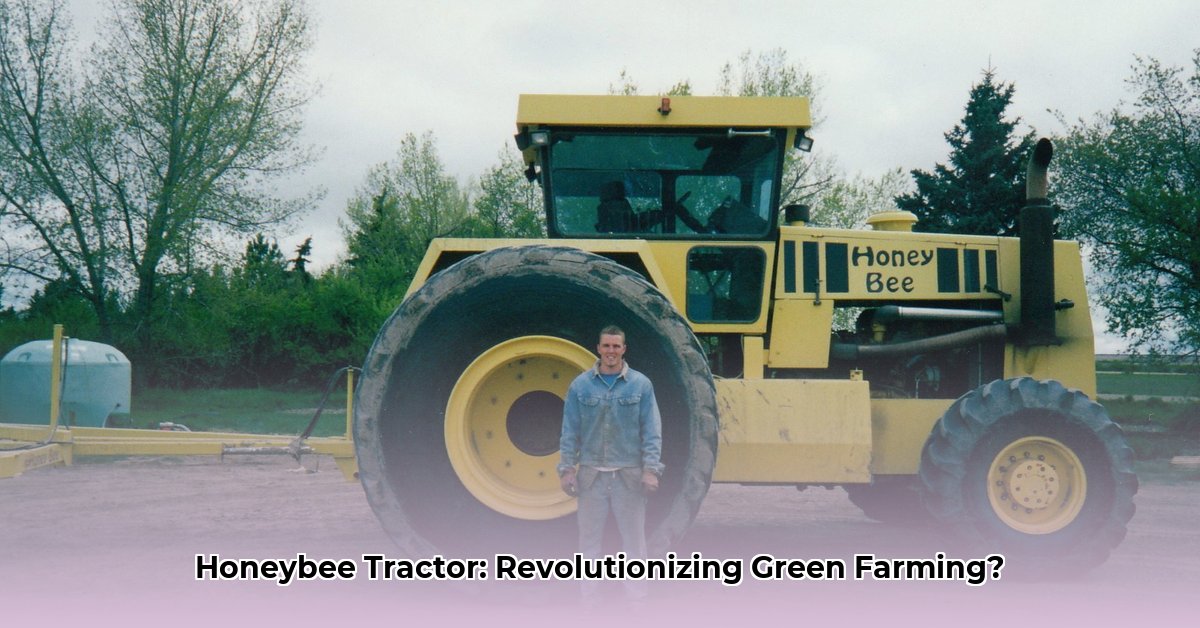
From Farmall 140 to Eco-Friendly Innovation: A Sustainable Farming Revolution
The term "honey bee tractor" evokes a romanticized image – a quiet, efficient machine working in harmony with nature. While no such tractor exists, the phrase perfectly encapsulates the shift towards sustainable agriculture. This article explores the evolution of farming technology, analyzing the potential of sustainable practices and the challenges that lie ahead. It uses the nostalgic image of a vintage Farmall 140 tractor – a symbol of simpler times – as a springboard to examine how modern technology is shaping a greener future for farming. But is this shift truly achievable, and what does it mean for the future of food production? For those considering smaller-scale operations, check out this guide on tractor sizing.
The Farmall 140, a workhorse of a bygone era, represents a time when farming was often heavy-handed, relying on powerful engines and resource-intensive practices. This approach, while effective in its time, has left a significant environmental footprint, contributing to soil degradation, biodiversity loss and greenhouse gas emissions. The "honey bee tractor" concept, in contrast, suggests a more nuanced approach – one that prioritizes precision, efficiency, and environmental sustainability.
Farming Smart, Not Hard: The Rise of Precision Agriculture
Modern agriculture is increasingly embracing precision farming techniques. Instead of blanket applications of fertilizers and pesticides, farmers now use GPS-guided machinery, sensors, and data analytics to optimize resource use. This targeted approach minimizes waste, reduces environmental impact, and often improves yields. Think of it as surgical precision versus the shotgun approach of traditional methods, maximizing efficiency while reducing unnecessary harm. How much more effective would this precision be in reducing pesticide use, while simultaneously maximizing crop yields thereby increasing food production?
Electrifying the Future: Sustainable Power Sources
The transition to electric and alternative-fuel tractors is another key element of sustainable farming. Electric tractors offer significant advantages—they are quieter, cleaner, and emit zero greenhouse gases during operation. “The shift towards electric tractors is not just about reducing emissions,” says Dr. Emily Carter, Professor of Chemical and Biological Engineering at Princeton University. “It’s about improving air quality in rural communities and fostering a healthier working environment for farmers.” The transition, however, requires significant investment in charging infrastructure and battery technology.
Navigating the Hurdles: Economic and Infrastructure Challenges
The shift towards sustainable farming practices faces significant challenges. The high upfront cost of new, eco-friendly equipment can be prohibitive for many farmers, particularly those operating smaller farms. "Access to capital and financial support is a major bottleneck," explains Mr. John Miller, Executive Director of the National Sustainable Agriculture Coalition. Government policies, including subsidies and tax incentives, are crucial in bridging this gap and making sustainable technologies more accessible. Likewise, developing reliable and robust charging infrastructure in rural areas is a critical step towards widespread adoption of electric tractors.
Building a Sustainable Future: A Collaborative Effort
The future of farming hinges on our collective ability to adopt sustainable practices. It requires a collaborative effort involving farmers, researchers, policymakers, and technology developers. Successful implementation of sustainable farming hinges on several key elements. The three most pivotal are:
- Technological Innovation: Continuous research and development of sustainable technologies are essential to improve efficiency and reduce environmental impact.
- Policy Support: Governments should provide financial incentives and supportive regulations to encourage the adoption of sustainable practices.
- Farmer Education and Training: Providing adequate training and education is essential to equip farmers with the skills and knowledge to effectively implement new technologies and strategies.
A Roadmap to a Greener Future: Actionable Steps
To accelerate the transition to a truly sustainable agricultural system, we can implement the following:
- Invest heavily in R&D: Continued research and development of sustainable technologies, including electric tractors and precision farming tools, is paramount.
- Implement supportive government policies: Governments need to incentivize environmentally sound farming practices with subsidies and tax breaks for farmers.
- Provide comprehensive training programs: Farmers require adequate training on the use and maintenance of sustainable technologies.
- Promote collaboration amongst stakeholders: Cooperation between farmers, researchers, policymakers, and technology companies is vital for successful implementation.
The "honey bee tractor" serves as a powerful metaphor for the future of sustainable agriculture—a vision where technology and nature work in harmony to produce food sustainably and responsibly. While a literal "honey bee tractor" doesn't exist, the underlying principle of eco-conscious farming is rapidly evolving, driving a crucial change in the world of agriculture. The journey is complex and challenging, but the rewards—a secure and sustainable food system for future generations—are well worth the effort.